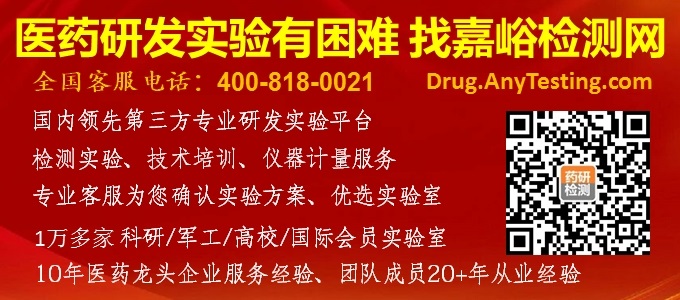FAQs regarding Cross Contamination
1. Is it acceptable to refer to scientific papers for the Contamination Control Risk Assessment in addition to the general guidelines?
除了通用指南之外,在污染控制风险评估中参考科学论文是否可以接受?
Yes. Both WHO and EMA in the EU GMP Guideline Part 3 QRM principles (ICH Q9) encourage the industry to include scientific data from literature after evaluation of being applicable to the specific case as well as toxicological evaluations from external sources in risk assessments, particularly for setting health-based exposure limits (HBELs) to decide which level of segregation is needed to avoid cross-contamination.
是的。世界卫生组织(WHO)以及欧盟药品生产质量管理规范(GMP)指南第 3 部分质量风险管理(QRM)原则(国际人用药品注册技术协调会 Q9)都鼓励制药行业在评估文献中的科学数据对特定案例的适用性后,将其纳入风险评估,同时也鼓励纳入来自外部的毒理学评估数据,尤其是在设定基于健康的暴露限值(HBEL)以确定需要何种程度的隔离措施来避免交叉污染时。
2. How and to what extent should surfaces that do not come into contact with the product be taken into account when considering the measures in avoiding cross contamination?
2.在考虑避免交叉污染的措施时,对于不与产品接触的表面,应如何以及在何种程度上加以考量?
Surfaces such as walls, floors, equipment exteriors and HVAC systems may be involved in cross contamination and should therefore be evaluated in a cross contamination control strategy. However, for cleaning validation EMA Annex 15 explicitly requires consideration of product contact surfaces.
墙壁、地板、设备外表面以及暖通空调系统等表面可能会参与到交叉污染中,因此应在交叉污染控制策略中对其进行评估。然而,对于清洁验证,欧盟药品管理局(EMA)附录 15 明确要求考虑与产品接触的表面。
3. Is a roughness of 0.8 µm a general requirement for good cleanability? Can you say a roughness of e.g. 1.6 is half as good?
3.表面粗糙度 0.8 µm是否是良好可清洁性的通用要求?是否可以说粗糙度为 1.6 µm(例如)的可清洁性是其一半?
Yes and no. 0.8 µm Ra is the widely accepted limit for cleanable GMP-grade stainless steel surfaces and can be considered as industrial standard. Cleanability is not linear; a surface of 1.6 µm is not "half as clean" - but it may trap significantly more residue. Also, cleanability is heavily dependent on the types of residues.
是也不是。0.8 µm的算术平均粗糙度(Ra)是可清洁的 GMP 级不锈钢表面广泛接受的限值,可被视为工业标准。可清洁性并非线性相关 —— 粗糙度为 1.6 µm的表面并非 “清洁能力减半”,但其可能截留的残留物会显著增多。此外,可清洁性在很大程度上取决于残留物的类型。
4. For OSD production in a shared facility: when is a clean corridor principle acceptable without an airlock for each production room and when is an airlock typically required?
4.对于共享设施中的口服固体制剂(OSD)生产:在什么情况下,不为每个生产房间设置气闸而采用洁净走廊原则是可接受的?在什么情况下通常需要设置气闸?
Only under strict conditions. The clean corridor concept is acceptable if:
仅在严格条件下可行。清洁走廊概念可接受的情况如下:
clear unidirectional flow of personnel and materials exists
differential pressures are maintained
robust cleaning and containment (if applicable) are demonstrated
人流和物流严格单向
维持压差
证明有可靠的清洁和密闭措施(如适用)
For potent APIs or highly sensitizing agents, dedicated airlocks are typically required per EU GMP Annex 3, PIC/S and ISPE Baseline® Guide for OSD.
对于高活性原料药(APIs)或高致敏性物质,根据欧盟 GMP 附录 3、PIC/S(药品检查合作计划)以及 ISPE(国际制药工程协会)《口服固体制剂基准指南》,通常需要为每个生产房间设置专用气闸。
5. Which parameters does a "state of the art" cleaning verification measure?
5.一项 “优秀” 的清洁验证会测量哪些参数?
Typically:
通常包括:
Total organic carbon (TOC)
Specific active ingredient (API) residues
Bioburden / endotoxins (if applicable)
Conductivity/pH for cleaning agent residues
Visual inspection
总有机碳(TOC)
特定活性成分(API)残留
生物负载 / 内毒素(如适用)清洁剂残留的电导率 /pH 值
目视检查
6. How often does the periodical cleaning validation verification have to be performed?
6.定期清洁验证确认应多久进行一次?
According to a risk-based schedule. EU GMP Annex 15 and PIC/S PE009 recommend periodic requalification of cleaning processes. The frequency must be justified (e.g. every 1-3 years) and triggered by changes in:
根据基于风险的计划执行。欧盟 GMP 附录 15 和 PIC/S PE009 建议对清洁工艺进行定期再确认。频率应有合理依据(如每 1-3 年一次),并在以下情况发生变更时触发:
product type
cleaning SOP
equipment
campaign duration
deviations or failures
产品类型
清洁标准操作程序
设备
活动持续时间
偏差或故障



